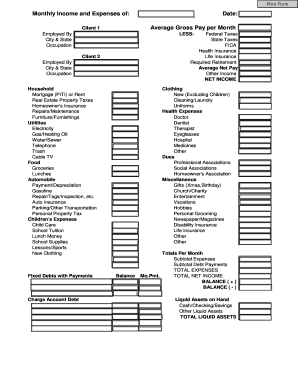What Is Double-Entry Bookkeeping? A Simple Guide for Small Businesses
Content

If one account has a natural debit balance, a debit will increase the total amount in the account. If the other account updated in the transaction has a natural credit balance, the corresponding credit will increase that account, too. A single journal entry can increase both accounts at the same time, decrease both or a combination. Finally, it requires The Main Specific Features of Double Entry Bookkeeping System extra work in the closing process to yield balanced financial statements. Public companies can’t use single-entry accounting because it’s not accepted under GAAP. In the double-entry system, each financial transaction is recorded in at least two different accounts. The two accounts affected by a transaction are known as the debit and credit accounts.

All small businesses with significant assets, liabilities or inventory. The double-entry system protects your small business against costly accounting errors. Write the difference between single entry system and double entry system. This then gives you and your investors or bank manager a good picture of the financial https://online-accounting.net/ health of your business. Even the smallest business can benefit from double-entry accounting. The best way to get started with double-entry accounting is by using accounting software. Many popular accounting software applications such as QuickBooks Online, FreshBooks, and Xero offer a downloadable demo you can try.
Equity Account
In order to understand how important double-entry accounting is, you first need to understand single-entry accounting. By defining Accounting as the language, we can define the accounts as the letters of the alphabet. Indeed, the accounts allow to categorize the bunch of transactions happened in a certain period, under the same umbrella. Assuming you own a bakery that just sold $100 worth of biscuits.
Each transaction has two aspects, wherein one receives the benefit while another gives away the benefit. And to keep a systematic record of the transactions, both aspects must be recorded. And the account that receives the benefit is debited whereas the account that foregoes the benefit is credited. As in physics, every action has an equal and opposite reaction. Similarly, in the field of accounting, every transaction results in an equal yet opposite balance in accounts, i.e. debit and credit. This is reflected in the books by debiting inventory and crediting accounts payable.
Double-Entry Equation
Even small businesses can benefit from the time savings and accuracy that leading accounting solutions bring, especially as they grow. Some systems simplify data entry by tracking digital receipts and allowing users to upload photos of physical ones, a much better alternative to keeping shoeboxes full of paper documentation. Accounting software can also typically integrate with bank and credit card accounts to automatically pull in information from those sources. And for business owners who use tax professionals, uploading data to tax systems when it comes time to file tax returns is much easier and less time-consuming than manual methods for both parties.
- Finally, it requires extra work in the closing process to yield balanced financial statements.
- Any events that cannot be expressed in terms of money are not recorded.
- For each debit there is an equal and opposite credit and the sum of all debits therefore must equal the sum of all credits.
- For example, to meet up the claim of a creditor taking a long-term loan.
- This system is similar to tracking your expenses using pen and paper or Excel.
